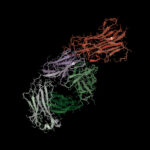Biosimilar drugs have the potential to reduce costs for patients with rheumatic diseases, but two rheumatologists and the American College of Rheumatology’s (ACR’s) recently updated position paper on the topic make clear that because creating and perfecting biosimilars are so difficult, taking a judicious approach makes sense.
“As we move into biosimilars in this country, we have to be extremely cautious,” says Kwas Huston, MD, a member of the ACR’s Committee on Rheumatologic Care. “We have to have the confidence that these drugs will be as effective and safe as the original drug.”
The process, of course, takes time. On March 6, the U.S. Food and Drug Administration announced it had approved the first biosimilar drug, Zarxio, a cancer treatment. The potential for biosimilars for rheumatic diseases is something the ACR supports, but “decisions regarding approval of biosimilars must be driven by sound science,” the ACR’s position paper reads.
To that end, the ACR’s position highlights calls to action on both the federal and state levels. In particular, the College is calling for:
—Rigorous clinical trials to ensure safety, efficacy and interchangeability of biosimilars with their base biologic.
—Safeguards to prevent repeated switching among biosimilars, because the potential adverse effects of switching are not yet known.
—Distinctive names for biosimilars compared with their original biologic. Names that could confuse patients or physicians make no sense and could make reporting and cataloguing of adverse effects more difficult.
—Long-term surveillance and adverse-event tracking.
“We will continue to follow the various issues surrounding the distribution, monitoring and reimbursement of biosimilars very closely as state and federal policies are proposed that affect our patients and the rheumatologists who serve them,” ACR President E. William St.Clair, MD, FACR, says in a statement. “Ensuring patients have easy access to affordable treatment options and rheumatology care continues to be a high priority for us.”
William Harvey, MD, MSc, FACR, chair of the ACR’s Committee on Government Affairs, says the path to that affordable treatment option requires more rules because it’s more complex than that of standard generics.
“Clinical trials must be rigorous and explore the impact and safety of switching in particular,” Dr. Harvey writes in an e-mail interview. “Further, all biosimilars are not exactly the same. If a typical drug is as complicated as a word of text in terms of its make-up, then a biologic (or biosimilar) is like the entire chapter of a book. Misspelling one word in that chapter means the biosimilar, while still having a similar effect, could have a different immune response. The immune system’s job is to find that one misspelled word (if it is a bacteria or virus) and attack it, so it is entirely plausible that small differences that don’t impact efficacy of the biosimilar COULD impact its immune effects.
“This is why the FDA has set a much higher bar for designating a biosimilar as ‘interchangeable.’ We are not afraid of biosimilars. We need them, and they will result, in the long term, in better access [for] patients. However, we can’t enter into that situation blindly. Testing and safeguards must be put into place.”
Taking into consideration the complexities of development, a recent Health Affairs study states that the level of cost savings achieved with biosimilars will likely be below what was expected when the Biologics Price Competition and Innovation Act was signed into law in March 2010, at least for the near future.
“The ACR has identified several key questions, several things that have to be answered to proceed,” Dr. Huston adds. “We want to make sure the right policies are in place so that physicians can feel confident and comfortable telling the patient, ‘It’s OK to be taking a biosimilar.’ Patients right now ask us all the time if it’s OK to take the generic or the brand name for drug X. Most of the time (it is), but this is different. These drugs are just not the same, and before I can tell the patient it’s OK … I need to know that everything has been done to make sure that drug is going to be effective and safe.” (posted 3/17/15)
Richard Quinn is a freelance writer in New Jersey.



